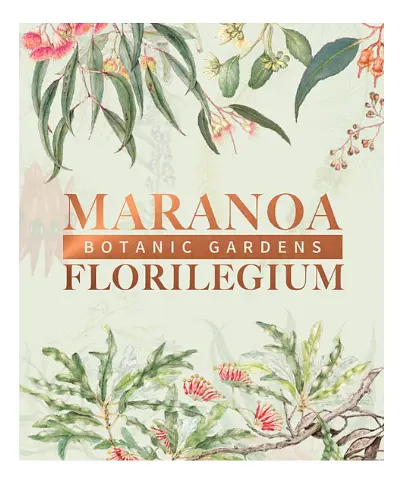 The Maranoa Botanic Garden is a hidden gem in Balwyn not far from Melbourne’s city centre. Recently it become entitled to use the word ‘botanic’ in its title, in recognition of its importance in conserving plant specimens in a living collection, as well as its history: Maranoa is the oldest native garden in Australia.
The Maranoa Botanic Garden is a hidden gem in Balwyn not far from Melbourne’s city centre. Recently it become entitled to use the word ‘botanic’ in its title, in recognition of its importance in conserving plant specimens in a living collection, as well as its history: Maranoa is the oldest native garden in Australia.
At 100 years of age it is time we celebrated the collections and the passion behind this garden. That’s precisely what the Maranoa Botanic Gardens Florilegium does. It is the first florilegium to circumnavigate Australia and contains paintings of plants growing in the gardens that hail from every state and territory as well as many of the islands around Australia. Castle, a botanical artist, presents research about the plants’ wild environment, the brave explorers who discovered them, the botanists who described them, as well as some quirky facts.
The book is illustrated with 100 fine paintings. The artists have concentrated on the ‘wild form’ of the plant. While all were scrutinised by botanists for accuracy, these are not meant to be scientific illustrations. Some have quite an ephemeral feel to them. They reflect the artists’ personal perspective, and their discerning eye on Australian flora.
The Maranoa Gardens Florilegium is published by Boroondara Council. It is the culmination of much creative work, and a supportive collaboration between community and council. Castle, whose work is in collections both in Australia and overseas, has been teaching a group of talented artists at a local community centre, located less than 500m from these wonderful gardens. Castle said it made sense to paint the ‘plant portraits’ and put them into a collection.
Tim Entwistle, director of The Melbourne Botanic Gardens and AGHS’s patron, wrote the foreword to the book, saying:
It’s a delightfully eclectic mix of plants, in a delightfully eclectic order. Not a matter of chance, but like everything else Margaret has done, a carefully considered construct. The result is very much the product of an artist’s eye. Why sort alphabetically by species or plant family, when these are portraits not mug shots? The paintings may be hung in a book rather than in a gallery, but as long as you have a good index it makes sense to reveal the paintings in their most aesthetically pleasing order.
The Maranoa Gardens were first established by John Watson, a wealthy mercantile broker, who bought 1.4 hectares of native bushland in 1901. This was to be a place for his children to play but also a showcase of Australian and New Zealand plants. No house was ever built on the site. Watson was a keen naturalist and plantsman. He had a connection with the Maranoa River in the Murray Darling Basin in Queensland and planted many plants endemic to Queensland including Stenocarpus sinensis, the Fire Wheel Tree, which has now become the gardens’ symbol of the gardens.
In 1926 the garden was purchased by the then City of Camberwell (now the Boroondara Council). On the day it was opened to the public that year, 500 people turned up to admire this native flora.
Over the years the garden has been extended into the neighbouring Becket Park, once known as One Tree Hill. The gardens now cover 3.5 hectares and feature separate zones to show different plant habitats. There is now a temperate woodland, a heathland, rockery and a rainforest. The garden features over 5000 plants, with all New Zealand natives now removed. It remains faithful to Watson’s vision for an Australian native garden. It has a State heritage overlay and is registered with the National Trust as an important part of Australian history.
The book is available exclusively from the Hawthorn Arts Centre: www.shop.boroondara.vic.gov.au.

